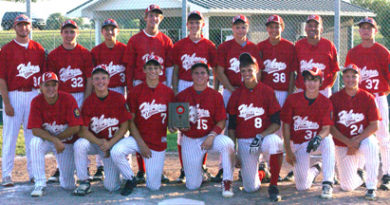Get Out and Plant a Tree This Fall
Fall is a good time of year for a lot of reasons. The kids are back in school, the summer heat is waning, leaves are changing colors, crops are being harvested, football is on the tube and candy corn becomes one of the food groups. Fall is also a great time of year to plant trees. In fact, it’s a favorite time of year for many tree planters. That’s not to say that fall is better than spring, but it definitely has its advantages.
One of the best reasons for fall planting is that the stress on both a newly planted tree and the person planting it are greatly reduced since neither will be a slave to water. Two primary factors are at play here. First, trees are heading toward dormancy or significantly slowing their metabolism in the fall, which greatly reduces their water needs for the next several months. Second, although a fall-planted tree may be going dormant, its root system is still actively growing and can even grow well into winter if the soil temperature stays warm enough. This allows the roots to become better integrated into the native soil over the cold months, thus reducing its supplemental watering needs the following spring and summer.
Trees planted in the spring or summer, on the other hand, are actively growing and moving lots of water throughout their canopies. Because their new roots have not yet grown out into the native soil, they can dry out quickly, necessitating fairly frequent watering. This is especially true for trees grown in containers. Just a few days of neglect can result in a dead tree when the weather turns hot and dry.
Another important benefit of fall planting is that root systems can be more readily examined for potential defects. Kinked, circling and stem-girdling roots are quite common with some nursery stock – defects which should be corrected at planting time if at all possible. In the cooler air of fall, a root system can be completely exposed for examination with less fear of desiccation and transplant shock. Finding the top of the root system also better ensures that the tree will be planted at the proper depth. Planting too deep is still a significant problem for many new trees.
One caveat to fall planting concerns evergreens. Whereas deciduous trees can be planted when it is quite cold, even well into winter as long as the ground is workable, evergreens tend to do better when planted in late summer or early fall, when there is still some growing season left to aid their establishment.
So now that we know fall is a great time for planting, what should be planted? With dozens of species and cultivars to choose from, that is not an easy answer. But here are a few unsung types that deserve some attention:
Black Cherry (Prunus serotina). This native forest-edge species doesn’t get much love, but it’s a winner. It’s relatively fast growing, has nice spring flowers and good fall color and it has tasty fruits that attract a variety of songbirds. The tree also provides habitat to a menagerie of important butterflies and insects. It grows up to 45 feet high and 30 feet wide and is not at all finicky like many of the flowering cherries that get more press but do nothing to aid biodiversity.
American Elm (Ulmus americana). Thanks to modern breeding efforts, the American elm can be planted without fear of Dutch elm disease that killed most of our stately American elms in the 1960s and ’70s. Give this tree plenty of room as it can grow 70 feet high and just as wide. Look for improved cultivars such as ‘Jefferson’, ‘New Harmony’ or ‘Princeton’.
Sycamore (Platanus occidentalis) is known for its tan and gray mottled bark that can become ghostly white with age. Growing up to 90 feet high, sycamore is tough and adaptable to a wide range of growing conditions, performing well in low, wet areas as well as along streets.
Ironwood (Ostrya virginiana) is native to the oak/hickory forests of eastern Nebraska, where it is typically found in the understory of taller trees. Although it prefers shade, it does just fine in full sun. It’s known for its tough “ironwood” and hops-like fruit that alludes to another common name: hophornbeam. The tree is medium in size growing to 30 feet high and 20 feet wide, often with multiple trunks.
Planting a tree is one of the best things you can do for yourself and your neighbors and it’s a great thing to do each fall. More resources at http://retreenebraska.unl.edu/


